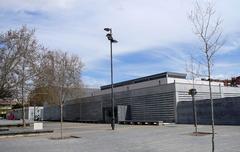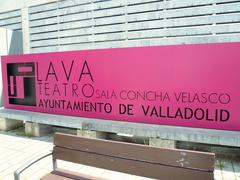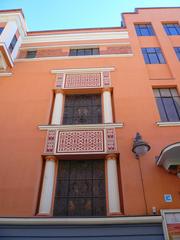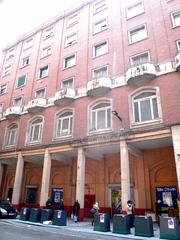University of Valladolid Visiting Hours, Tickets, and Travel Guide
Date: 03/07/2025
Introduction
Situated in the heart of Castile and León, the University of Valladolid (Universidad de Valladolid, UVa) is one of the oldest universities in the world, dating back to 1241. Over nearly eight centuries, it has played a pivotal role in shaping Spain’s academic, political, and cultural landscape. The university is renowned for its blend of Renaissance and Baroque architecture, impressive museum collections, and central location, making it a key destination for travelers, history enthusiasts, and prospective students.
This guide provides detailed and up-to-date information on visiting hours, ticketing, accessibility, and travel tips for exploring the university and the city of Valladolid. By using official university resources and local tourism portals, visitors can plan a seamless and enriching experience.
For the most current information, consult the official University of Valladolid history page, university cultural heritage portal, and the Valladolid tourism site.
Contents
- Historical Overview
- Origins and Early Development
- Expansion and Regional Influence
- Architectural Highlights
- Main University Building
- Notable Heritage Sites
- Visiting the University: Hours, Tickets & Accessibility
- University Museum: Collections, Hours, and Visitor Information
- Monument Guide: Unique Features, Hours, and Amenities
- Top Valladolid Historical Sites
- Travel Tips and FAQs
Historical Overview of the University of Valladolid
Origins and Early Development
Founded in 1241, UVa is among the world’s oldest universities, deeply intertwined with Valladolid’s historical status as a political and religious center. Its roots coincide with a period of intellectual flourishing in medieval Spain. The university has contributed to key events, such as Valladolid’s brief role as the Spanish capital under Philip II in the 16th century and the creation of the first Spanish Constitution in 1812 (psc.uva.es, factsgem.com).
Expansion and Regional Influence
Today, UVa operates campuses in Palencia, Soria, and Segovia, each incorporating heritage buildings like Palencia’s La Yutera factory, Segovia’s Mansilla Palace, and Soria’s Convent of La Merced. These sites blend historical architecture with modern educational facilities (psc.uva.es).
Architectural Highlights
Main University Building
At the core of Valladolid’s historic center, the university’s main building features a renowned Baroque façade completed in the early 18th century. Its ornate stonework, grand columns, and sculptural details exemplify the Spanish Golden Age (xixerone.com). The structure harmoniously integrates Renaissance and Baroque elements and often hosts exhibitions and public events.
Notable Heritage Sites
- Palacio de Santa Cruz: A prime example of late 15th-century Renaissance architecture, now housing the university library and exhibition spaces.
- House of Los Zúñiga: Showcases Renaissance domestic design; currently home to the Buendía Centre and Publications Department.
- Casas de la Beneficencia: 16th-century buildings serving as administrative offices.
- Reina Sofía University Library: A former Royal Chancery prison converted into a modern library.
- Hostelry of Santa Cruz College: Historic 17th-century residence, now used for student housing (psc.uva.es).
Visiting the University: Hours, Tickets & Accessibility
Visiting Hours
University buildings and heritage sites are generally open Monday to Friday, 9:00 AM to 6:00 PM. Weekend and holiday schedules may vary; always verify hours on the official website.
Tickets & Guided Tours
Entry to historic university buildings is typically free. However, some special exhibitions or events may require tickets. Guided tours are available and can be reserved through the university or local tourism offices, offering in-depth historical and architectural insights.
Accessibility
UVa is committed to accessibility, with ramps and elevators in key buildings. For visitors with special needs, it is advisable to contact the visitor center in advance for personalized assistance.
University of Valladolid Monument: Guide to Visiting
Historical Significance
UVa’s main building stands as a testament to centuries of academic tradition, with highlights including the iconic Baroque façade, Aula Magna (Grand Lecture Hall), and historic chapel. The university has hosted renowned scholars and contributed significantly to Spanish intellectual history.
Visiting Hours and Tickets
- Open: Tuesday–Sunday, 10:00 AM–6:00 PM (last entry at 5:30 PM)
- Closed: Mondays and public holidays
- Tickets: General admission is €5; discounts for students, seniors, groups; free entry on the first Sunday of each month
- Tickets are available online at the university heritage website or at the ticket office. Guided tours in Spanish and English can be booked in advance.
Unique Features
- Aula Magna: Original frescoes, wood paneling, and historic artifacts
- Chapel: 16th-century religious art and stained glass
- Library: Rare manuscripts and early printed books
- Courtyards: Tranquil spaces with centuries-old inscriptions and stonework
Accessibility and Amenities
The monument is wheelchair accessible, with ramps and elevators. Audio guides and printed materials are available in several languages. Amenities include restrooms, a café, and a souvenir shop.
University of Valladolid Museum: Collections, Hours, and Visitor Information
Location and Architecture
The museum is located in the historic “shell house” (Casa de las Conchas), featuring a notable Gothic patio (Turismo Castilla y León).
Collections and Exhibitions
- Heraldic emblems and historical photography
- Sumptuary and ceremonial objects
- Artwork (16th–21st centuries): Religious and contemporary pieces
- Teaching tools and scientific instruments
- Rare books and manuscripts
Temporary exhibitions are regularly held in the Gothic patio, highlighting both historical and contemporary themes.
Archives and Specialized Museums
The archives preserve invaluable academic records and personal papers. The Anatomical Museum, within the medical school, features over 500 skulls, 200 skeletons, and historical medical instruments (Atlas Obscura).
Visiting Hours and Tickets
- Museum: Typically Monday to Friday, 10:00 AM–2:00 PM and 4:00 PM–7:00 PM
- Admission: Free or nominal charge for most exhibits; some events or guided tours require payment
- Guided Tours: Advance booking recommended
- Anatomical Museum: Visits by prior arrangement (Atlas Obscura)
Accessibility & Services
The museum is in a historic building; contact in advance for accessibility details. Guided tours are offered in multiple languages, and facilities include libraries and study spaces (Erasmusu).
Top Valladolid Historical Sites
- Plaza Mayor: Central square with vibrant architecture and cafés (Nomads Travel Guide)
- Valladolid Cathedral: Renaissance masterpiece (Nomads Travel Guide)
- National Sculpture Museum: Exceptional religious sculpture collection (The Crazy Tourist)
- Iglesia de San Pablo: Ornate Gothic façade (Nomads Travel Guide)
- Santa Cruz College: Early Renaissance architecture (Spain.info)
- Casa de Cervantes: Museum dedicated to Miguel de Cervantes (Nomads Travel Guide)
- Casa-Museo de Colón: Columbus-related artifacts (Spain.info)
- José Zorrilla House-Museum: Writer’s former residence (Spain.info)
- Campo Grande Park: Landscaped park with fountains and wildlife (Nomads Travel Guide)
- Museums: Patio Herreriano (contemporary art), Oriental Museum (Asian collections)
- Festivals: Semana Santa, SEMINCI Film Festival, Valladolid Fair (Spain.info)
- Gastronomy: Traditional dishes like roast lamb (lechazo), suckling pig (cochinillo), and local wines (Nomads Travel Guide)
Practical Travel Tips
- Getting There: Valladolid is accessible by high-speed train (AVE) from Madrid in about an hour (Spain.info).
- Best Time to Visit: Spring and autumn offer mild weather and fewer crowds.
- On Campus: Comfortable shoes recommended; Wi-Fi and restrooms available.
- Language: Basic Spanish is helpful; English is spoken in tourist areas (Nomadic Matt).
- Accessibility: Most university and museum buildings offer ramps and elevators.
- Safety: Valladolid is considered safe; emergency numbers are posted on campus.
- Combining Visits: The university’s central location makes it easy to visit nearby attractions.
Frequently Asked Questions (FAQ)
Q: What are the university’s visiting hours?
A: Main buildings are open Monday–Friday, 9:00 AM–6:00 PM. Museum and monument hours may differ; check official websites.
Q: Is there an entry fee?
A: University sites are generally free; some museums or guided tours require tickets.
Q: Are guided tours available?
A: Yes, in Spanish and English. Reserve in advance.
Q: Is the university accessible for people with disabilities?
A: Most buildings are accessible; contact visitor services for specific needs.
Q: How do I get to Valladolid from Madrid?
A: By AVE high-speed train in about one hour.
Q: When is the best time to visit?
A: Spring (April–June) and autumn (September–October).
Summary
The University of Valladolid is a living monument to Spain’s academic and architectural heritage. Its historic buildings, museum collections, and vibrant campus invite visitors to explore centuries of culture and scholarship. With accessible facilities, guided tours, and proximity to Valladolid’s top historical sites, the university offers an immersive travel experience. Plan your visit for spring or autumn, utilize virtual resources, and enjoy one of Spain’s most captivating destinations.
For the latest updates, visit psc.uva.es, uva.es/cultural-heritage, and valladolidturismo.com.
References
- PSC UVa
- UVa Cultural Heritage
- Museo Universidad de Valladolid - Turismo Castilla y León
- Spain.info
- Atlas Obscura
- Valladolid Tourism Office
- Nomadic Matt
- Spain This Way
- Adventure Backpack
- UVa International
- Nomads Travel Guide
- The Crazy Tourist
- Erasmusu




